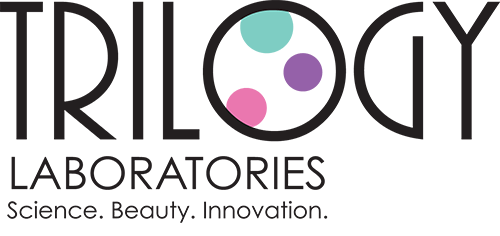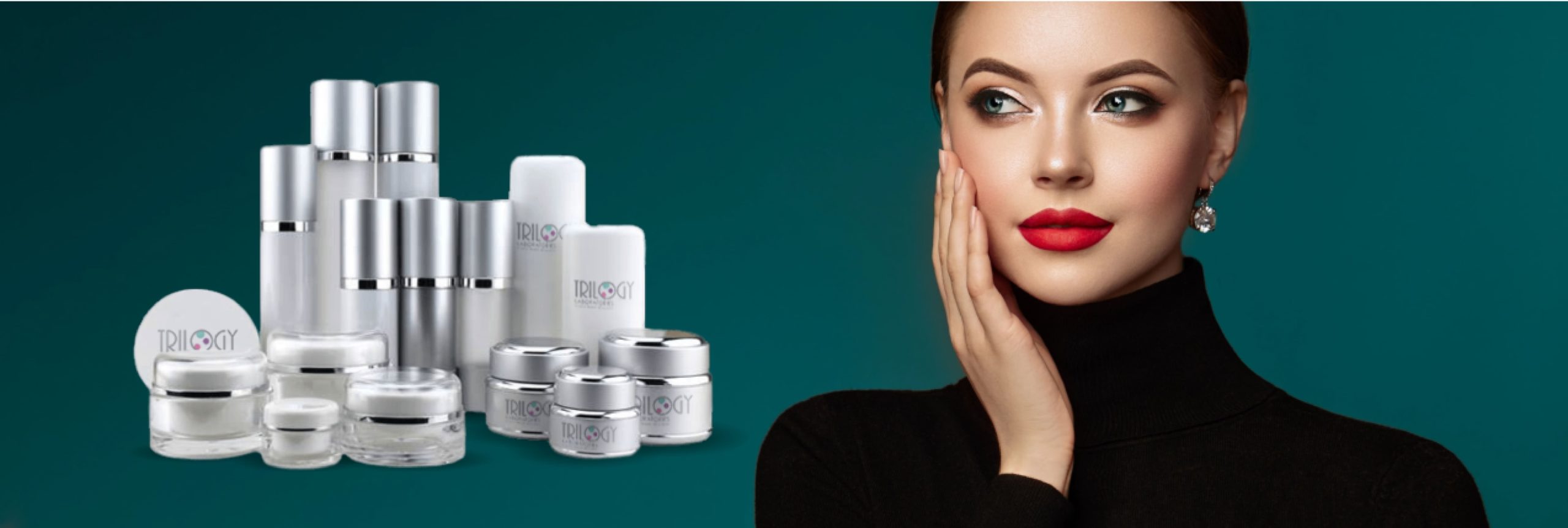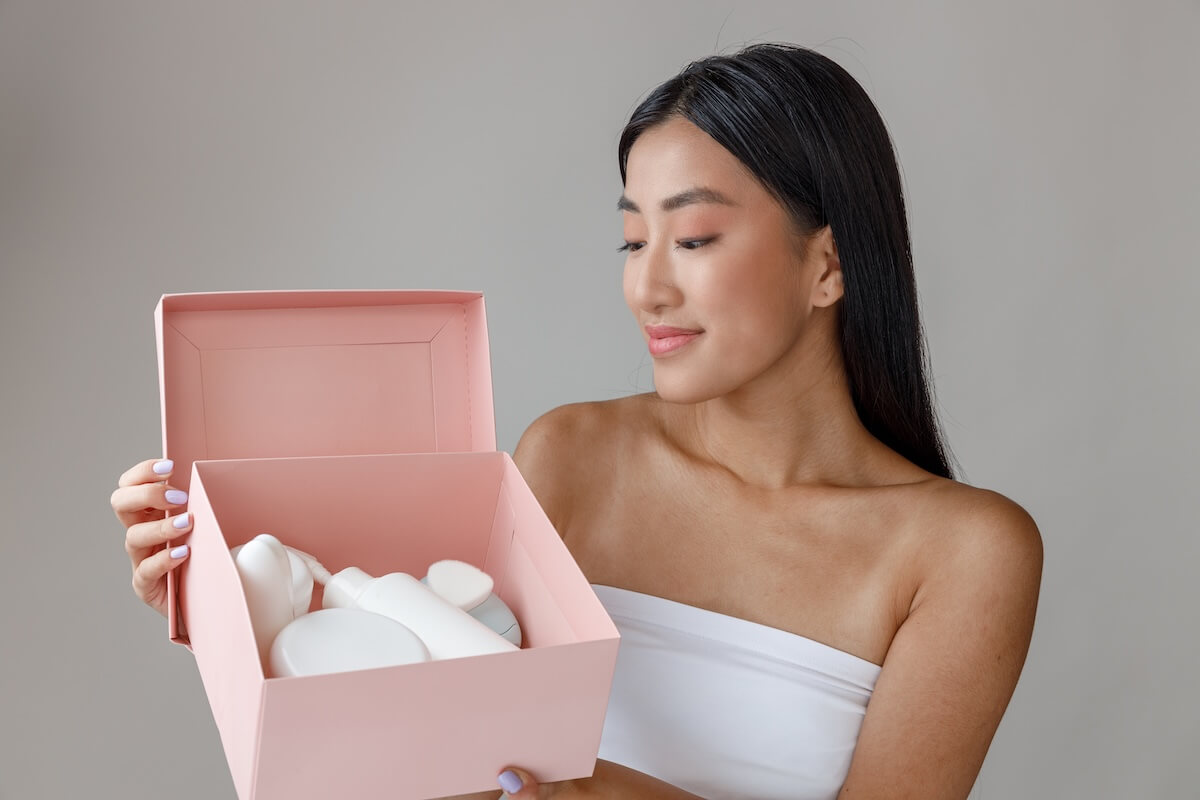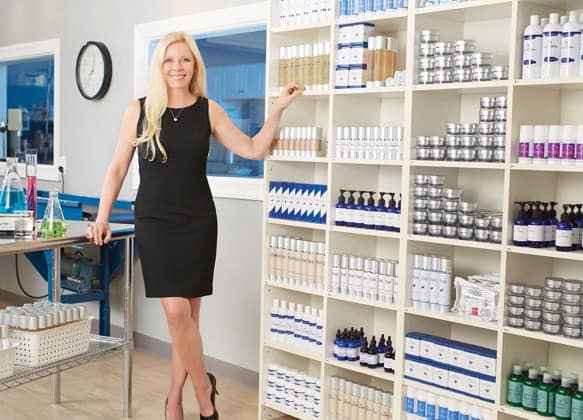What makes a shopper pause in front of a crowded shelf or stop scrolling mid-feed to take a closer look at a skin care product?
It’s not just what’s inside the bottle. It’s also the packaging that catches the eye, tells a story, and invites curiosity.
For skin care brands, packaging is your silent salesperson. It’s the first impression you make and the physical embodiment of your brand. Whether you’re starting a beauty line from scratch or refreshing your current look, designing standout skin care packaging can be the key to connecting with your ideal customer.
Important Elements of Skin Care Packaging Design
The visual and tactile details of your packaging communicate product information as well as convey your brand’s identity. It all starts with these foundational elements that deserve thoughtful attention in your skin care packaging design process.
Color Palette
Color is one of the most powerful elements in design, especially for skin care. It instantly influences mood and perception.
Soft pastels often signal gentleness and simplicity, making them ideal for sensitive skin lines or natural products. On the other hand, bold, saturated hues can convey modernity, confidence, and innovation. If you want to evoke luxury, consider deep jewel tones or classic black and gold combinations.
Your palette should align with your brand personality and resonate with your target audience.
Typography
Fonts do more than spell out your product name. They shape the feel of your entire brand.
A sleek sans-serif font can evoke minimalism and modernity, while an elegant serif font lends a sense of tradition and prestige. Handwritten or retro-inspired fonts can give your packaging a unique, artistic flair that feels personal and expressive.
Choose no more than two complementary fonts to keep your design clean and cohesive. And always prioritize legibility, especially for ingredients and usage instructions.
Patterns & Graphics
The right visuals can turn a basic label into a miniature work of art.
Flat graphics offer a contemporary aesthetic, while bold patterns and illustrated designs can tell a story or reference your brand origins. A wave pattern might suggest hydration, while floral motifs can connect to botanical ingredients. Gradients and retro elements like 70s-inspired swirls or stripes are gaining popularity for brands that want to appear trend-savvy and nostalgic.
The key is consistency across your skin care product line so each item feels like part of a larger family.
Label
Labels frame your entire brand message while also conveying essential information to your customers. Effective label design ensures that key information stands out without feeling cluttered. It should include your logo, product name, net weight, ingredients, and directions for use. Label placement, shape, and size must also complement the packaging type, such as a tube, jar, or bottle.
You can elevate your label with finishes like foil stamping, embossing, or soft-touch coatings to enhance the overall tactile experience.
Material Choice
The materials you choose speak volumes about your brand values and product quality.
Glass containers often imply luxury and sustainability, while PET plastic offers durability and affordability. Transparent packaging showcases the texture and color of your product, which can be visually appealing and promote transparency in branding. Eco-conscious consumers are also drawn to recyclable or refillable packaging, making sustainable materials a smart business choice.
Your material should balance aesthetics, functionality, and environmental impact.
How to Design Skin Care Packaging: 8 Steps to Follow
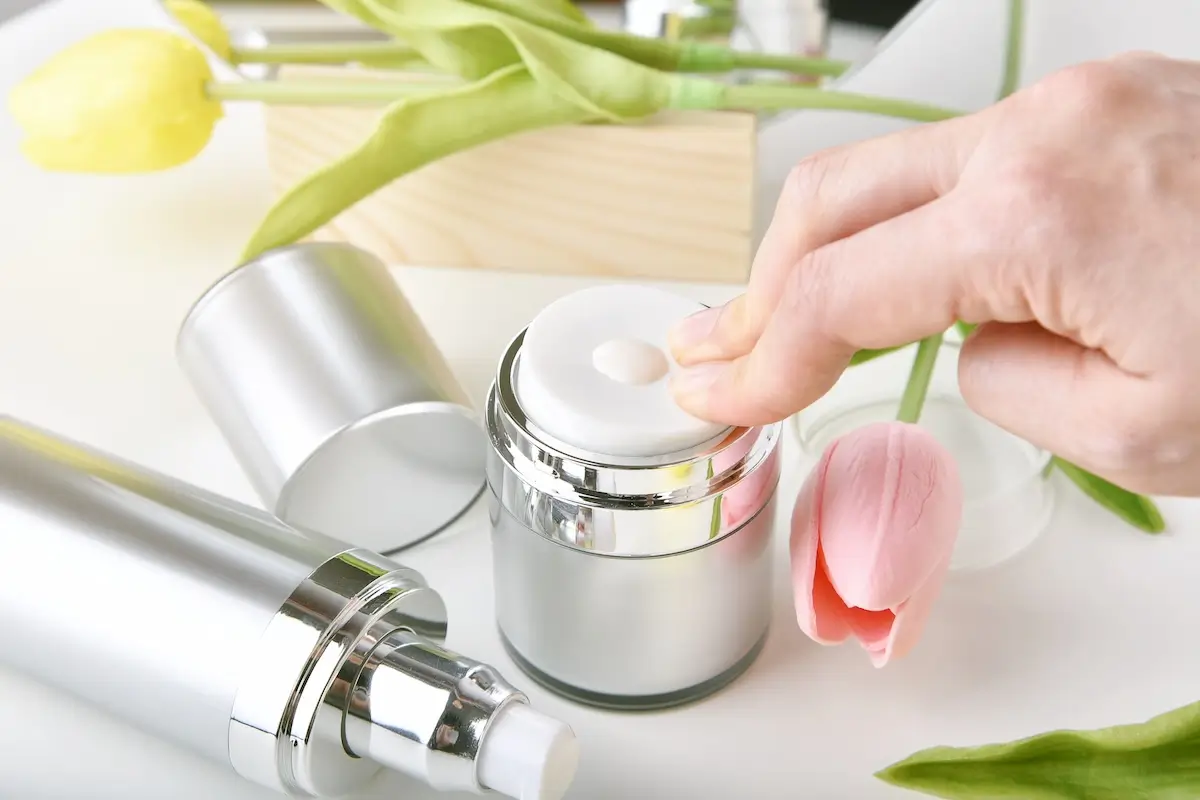
Creating memorable skin care packaging is both an art and a science. The most successful designs come from a clear understanding of your brand and your customers, supported by creative exploration and testing.
Follow these steps to design creative skin care product packaging that grabs attention and builds trust.
1. Define Your Target Audience
Before sketching ideas or choosing colors, get to know who you’re designing for. A product aimed at Gen Z may call for playful illustrations, vibrant palettes, and social-media-friendly design. In contrast, a premium anti-aging cream might demand a sleek, understated look with high-end finishes.
Knowing your target audience’s lifestyle, preferences, and purchase behaviors helps shape a design they find irresistible.
2. Identify Your Brand Personality
Think of your brand as a person. Is it fun and adventurous? Calm and clinical? Sophisticated and luxurious? Your packaging should express this personality at first glance.
For instance, a clean, all-white design with crisp black text suggests professionalism and trust, which is perfect for a dermatologist-developed product. On the other hand, earthy tones and hand-drawn botanicals can evoke a sense of natural beauty and sustainability.
3. Assess Your Sales Channels
Where your product will be sold affects how it should be presented.
For online-only brands, your packaging needs to photograph well and stand out on a never-ending list of digital products. In contrast, in-store packaging must grab attention from a distance and convey key benefits quickly. Products sold in boutiques may call for artisanal details, while mass retail may benefit from bold designs that pop off the shelf.
4. Develop a Mood Board
A mood board helps create a visual direction for your packaging and keeps your team aligned throughout the design process. It’s a helpful tool for briefing designers or manufacturers about what you’re looking for in your skin care packaging.
Collect inspiration from fashion, art, nature, or even architecture that aligns with your brand. Include colors, textures, patterns, and packaging styles that evoke the feeling you want your brand to convey.
5. Choose Packaging Types
Think beyond the outer box and consider all components your product needs. Do you need a pump bottle, dropper, jar, or squeeze tube? Is an outer carton necessary for protection and storytelling? For example, serums often use dropper bottles to suggest precision and efficacy, while body creams may come in wide-mouth jars for easy application. The structure should match the function.
6. Establish Your Design Standards
Design standards help maintain a cohesive look, whether you’re launching one product or twenty. It also makes it easier to scale your brand.
Create a brand style guide that outlines specific rules for your logo usage, color codes, font styles, image types, and tone of voice. This document ensures consistency across product lines and marketing materials.
7. Create a Prototype
Before committing to final production, develop 3D mockups or prototypes. These can be digital renderings or physical samples. They allow you to test the look, feel, and functionality of your design. You might discover that a color looks different in print or that a label is difficult to read on curved surfaces. Iteration is key at this stage.
8. Test & Finalize Your Design
Get feedback from team members, potential customers, or retail partners. Does the design resonate? Is the label clear and compliant with regulations? Consider doing a small test run before mass production.
Feedback and testing ensure that your final design is both beautiful and effective.
Creative Skin Care Packaging Design Trends for Inspiration
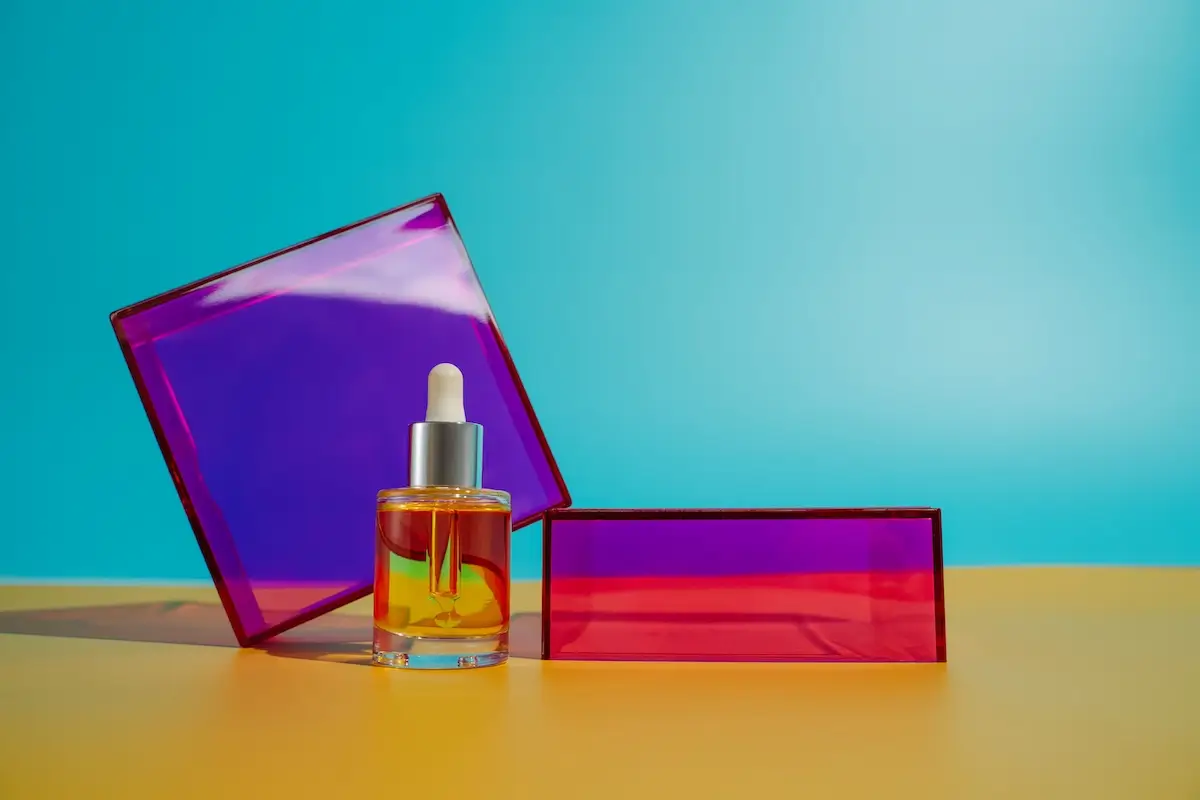
The beauty world evolves quickly, and packaging trends reflect broader shifts in consumer preferences and aesthetics. Here are some of the most popular trends making waves in skin care packaging today.
Bold Colors with Minimalist Layouts
This trend pairs vibrant, saturated hues with clean, spacious designs. Imagine electric blue paired with crisp white text, or neon pink set against a matte background. The contrast grabs attention while maintaining a sleek, modern feel. It’s ideal for brands targeting younger demographics or looking to stand out online.
Transparent Packaging
Clear containers allow consumers to see the product inside, conveying honesty and purity. This approach is especially effective for gel-based products, oils, or products with unique colors or textures. It also suggests a no-frills, straightforward design that appeals to minimalist and ingredient-conscious buyers.
Illustrated Designs
Custom illustrations add a personal, artistic touch to your packaging. Illustrated elements, like a sketch of your key ingredient or a whimsical character, make your brand more relatable and memorable. This style works particularly well for indie or boutique brands.
70s Retro Color Schemes & Fonts
Vintage is back, but with a twist. Earthy oranges, mustard yellows, and rounded typography evoke nostalgia while feeling fresh and fashion-forward. This aesthetic works well for brands looking to tap into trends without sacrificing authenticity.
Artistic Packaging That Doubles as Décor
Think of packaging that’s too beautiful to throw away. These designs often feature unique shapes, tactile finishes, or artistic prints that encourage customers to repurpose containers. It adds value and strengthens brand loyalty.
Sustainable, Eco-Friendly Materials
Consumers are increasingly drawn to packaging that aligns with their environmental values. Recyclable paper, refillable containers, and biodegradable plastics are becoming mainstream. Highlighting these elements in your design can increase trust and loyalty.
Matte Finishes with Foil-Stamped Accents
Matte packaging has a modern, soft-touch feel that suggests sophistication. Add in foil stamping—perhaps your logo or product name in gold or rose gold—and you’ve created a luxurious look that feels indulgent without being over-the-top.
6 Tips for Skin Care Product Packaging Design
Go beyond the idea of making your products “look pretty.” When it’s done right, the way your skin care packaging is designed can make a lasting impression.
Use these tips when designing your skin care product packaging to refine your approach and avoid common pitfalls.
1. Simplicity Sells
A clean, uncluttered design often feels more high-end than a busy one. Luxury brands like La Mer and The Ordinary have proven that minimalism resonates. Focus on what matters—your logo, product name, and key benefits—and let the design breathe.
2. Make Your Logo the Focal Point
Your logo is your brand anchor. Placing it front and center helps build recognition and trust. For new brands, a prominent logo reassures customers that they’re buying from a reputable source.
3. Use Texture Wisely
Tactile elements can elevate even the simplest designs. Embossed logos, soft-touch coatings, or raised patterns invite touch and add a sense of quality. These details can make your packaging stand out in the hands of your customer.
4. Tell Your Story
Your packaging should reflect who you are. Use visual storytelling to connect with your customer on a deeper level. It may look like a nod to your brand’s origin, a reference to natural ingredients, or even an artistic illustration.
5. Be Eco-Conscious
Modern consumers want to feel good about their purchases. Using recyclable materials or offering refillable packaging not only reduces environmental impact but also strengthens your brand’s reputation. Be sure to communicate your sustainability efforts clearly on the label.
6. Use Mockups
Mockups help you spot issues early. A digital 3D render or a printed prototype lets you assess color accuracy, font size, and overall layout. It’s a low-risk way to perfect your design before committing to a production run.
DIY vs. Hiring an Artist: How to Choose the Right Designer for Your Skin Care Packaging Line
Are you more hands on with your skin care line, or do you prefer to outsource? Finding the right design path is critical to your packaging success.
DIY Design
If you’re creatively inclined and have a handle on design tools like Canva or Adobe Illustrator, the DIY route can be cost-effective. It offers total control and flexibility, especially in the early stages of your brand.
However, you’ll need to research FDA label requirements, printing specs, and industry best practices to ensure compliance and professionalism.
This option works best for simple, low-volume product lines or proof-of-concept launches.
Hire a Designer
Working with a professional designer gives you access to industry expertise and high-quality visuals. Look for someone with a background in cosmetics or CPG (consumer packaged goods) to ensure they understand technical specs like dielines, bleed, and regulatory labeling.
A seasoned designer can translate your brand vision into packaging that works across different formats and platforms. It’s an investment, but one that can pay off in brand recognition and consumer trust.
Work with an All-in-One Manufacturer
If you want to save time and ensure a polished, compliant look, Trilogy Laboratories makes the design process simple. Choose from our professionally developed stock packaging or go the custom route. We can work with your existing graphic designer or connect you with our in-house team to create a custom label layout that includes your logo, product name, brand colors, and signature style.
Partnering with a manufacturer like Trilogy Laboratories is the perfect blend of convenience and creativity. We can provide both packaging, a designer and ancillary packaging such as boxes.
Bring Your Skin Care Packaging Design Vision to Life with Trilogy Laboratories
Are you ready to build your skin care brand or expand your line of beauty products? Skip the messy at-home chemistry and let us formulate, manufacture, and label your skin care products in our one-stop-shop.
At Trilogy Laboratories, our experienced project consultants are ready to guide you through the process of creating high-quality skin care products that align with your company’s vision. We offer a beautiful selection of packaging, low minimum order quantities, and customizable formulas made with natural and scientifically advanced ingredients—all so you can wow your users, develop a loyal customer base, and grow your beauty brand.
Whether you want to streamline your launch with our private label options, create a totally custom formula or collaborate with our expert designers on a custom look, we’re here to help you create packaging that stands out on the shelf and resonates with your customers.
Contact us today or call 239.939.5454 to get started with your private label skin care line.
Posted in Professional Skin Care
